
2008
The Rudd Government said that they were committed to improving maternity services for Australian women. Minister Nicola Roxon (Minister for Health and Aging) conducted a Maternity Services Review asking for public input into how maternity services could be improved. It was hoped that this review would allow Medicare and professional indemnity (PI) insurance for private midwives.
Feb 2009
The recommendations from the Maternity Services Review were made public. Despite an overwhelming 56% of submissions advocating for more affordable homebirth options, the recommendations ignored these submissions
On 1st July 2010, all health care professionals will come under the national registration scheme for which they have to demonstrate they have PI insurance whenever they practice. All health professionals, with the exception of private practice midwives, are able to purchase such insurance or are covered by their employer. In 2001 midwives were no longer able to purchase PI insurance as insurance companies did not consider them financially viable group. Without insurance, a private midwife attending a homebirth after 1st July 2010 would be outside the conditions of their registration. The recommendations of the Maternity Service Review (above) had said that homebirths would not be funded or insured and the intersection of the national registration scheme and the national maternity reforms meant that registered midwives could not provide homebirth care without being deregistered.
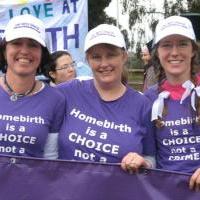 April 2009
April 2009
I and some passionate women in my area started the Save Birth Choices website. We also coordinated visits to local federal members of parliament for Sydney residents and later extended our support to other states.
July 2009
A Senate Inquiry was held into the bills before parliament that would effectively outlaw private midwives attending homebirths. They received nearly 2000 submissions for this inquiry which was outstanding. The findings of the inquiry was that though private midwives would have difficulty in attending a homebirth as a registered practitioner this was an “unintentional consequence” of the new registration system. The Senate recommended passing the midwifery bills which were unrelated to the national registration scheme in law.
In July we filmed one of my midwifery clients giving birth at home. This coverage was later put to air for Sunday Night on Channel 7 – the first prime time segment dedicated to this cause.
September 2009
Homebirth Australia hosted a rally at Parliament House in Canberra. On a freezing cold, raining day over 3000 women, men and children turned out on the lawn of Parliament to protest the proposed changes to homebirth. The turn-out far exceeded expectations. It was phenomenal. See my YouTube channel for footage of the rally and photographs in the image gallery below.
Our Save Birth Choices group coordinated the virtual rally tickets which were a sea of purple ladies all purchased and representing people that would like to have been there but couldn’t be.
Two days prior to the Homebirth Rally Nicola Roxon announced a 2-year exemption for private midwives to carry professional indemnity insurance if they attend homebirths. The result is that homebirths with a registered private midwife in attendance can continue up until 30th June 2012 (under conditions that were not outlined).
November 2009
The Government announced that for midwives to work in private practice they must work in “collaborative arrangements” with doctors. Although these “collaborative arrangements” were only for Medicare-covered care, therefore excluding homebirth – there was grave concern that the 2-year exemption may also be impacted. Doctors (who are not mandated to enter agreements) had the right to veto the decisions of the mother and midwife and could withdraw collaborative arrangements at any point. At one stage this amendment also impacted the government’s indemnity package attached to Medicare which would have meant that withdrawing from the arrangement could render a midwife uninsured impacting her registration. However, the government quickly withdraw the requirement for “collaborative arrangements” to register just leaving it impacting which midwives would have access to Medicare.
There held outside MP’s offices in Sydney, Brisbane and Melbourne. The Brisbane rally outside Kevin Rudd’s office made the news.
December 2009
Yet they announce another Senate Inquiry, to investigate the amendment to the Medicare bill going through parliament that requires a “collaborative arrangement” by a midwife with a medical practitioner. Again they receive over 2000 submissions, demonstrating the passion of consumers and midwives. The Department of Health and Aging stated that a “collaborative arrangement” may not be a signed agreement between doctors and midwives but they did not provide other examples.
In late December VIC Health, who is in charge of that process, release the first draft of the conditions around the homebirth exemption. These conditions also mandated a signed collaborative letter between doctors and midwives. Effectively this arrangement would give doctors the power to decide where a woman gives birth.
February 2010
They release the Senate Inquiry recommendations. The finding of the inquiry is that midwives will require a “collaborative arrangement” with a medical practitioner to access Medicare Benefits Scheme (MBS) and the Pharmaceutical Benefits Scheme (PSB) but not the Midwife Professional Indemnity (Commonwealth Contribution) Scheme being sought by the government. The definition of a “collaborative arrangement” has not been provided yet. It may be a written agreement signed by the doctor and midwife, but it may not be. Midwives and women wanting homebirth care after July 1 are awaiting the definition in Federal parliament in the coming weeks.
On the 18th of February people from all different backgrounds gathered in 15 locations across Australia to register their protest at the Rudd Government’s policies that threaten to restrict options for women giving birth. The Our Bodies, Our Babies, Our Rights Rally gained reasonable media coverage.
March 2010
On Tuesday 16th March the Australian Senate passed bills that enable eligible midwives to provide Medicare-funded antenatal, birth and postnatal care and to be able to prescribe certain medicines under the Pharmaceutical Benefits Scheme (PBS). Medicare rebates are only available for birth in a hospital. Rebates for prenatal and postnatal care will be available to all women, including women birthing at home. The new Medicare Benefits Scheme for midwifery and PBS will commence on the 1st November 2010. They will soon announce the details of what is an eligible midwife and how the new system is to work. You can read more Maternity Service Reforms fact sheets released by the commonwealth government and a summary called the National Maternity Reform by the Australian College of Midwives.
May 2010
There is only 5 weeks to go until the commencement of the national registration scheme for midwives. It is a stressful time for midwives in private practice and for women planning homebirth.
From July 1st Midwives must have professional indemnity insurance or potentially the Nursing and Midwifery Board of Australia (NMBA) will penalise them. There is an exemption from the requirement for private practice midwives to hold professional indemnity insurance in relation to homebirth for a period of 2 years. Midwives attending homebirths will still need insurance for pre and postnatal care. At this point, there is still no information about how to administer the homebirth exemption. Midwives attending homebirth will need to do three things to avoid problems with the NMBA:
- Gain the informed consent of the woman to your not having insurance for her labour and birth care
- Submit data about women’s care to your relevant state/territory perinatal data agency
- Be able to demonstrate, if audited, that you are working in accordance with any safety and quality requirements as required by the Nursing and Midwifery Board.
Soon midwives will be able to obtain professional indemnity insurance from at least 2 sources:
- The Commonwealth supported insurance to be offered by Medical Insurance Group Australia, covering pregnancy and postnatal care in any setting, and labour and birth care in a clinical setting for $7500 per year for full-time practice. Reduced rates are available for part-time practice
- Mediprotect
From the first of November Medicare rebates will be available for pre and postnatal midwifery care and for birth in a clinical setting. Midwives will need to qualify as an eligible midwives. What this means remains unclear. However, it is likely to be a midwife who:
- Has current general registration as a midwife in Australia with no restrictions on the practice
- Has practised for at least three years across the continuum of midwifery care, within the previous 5 year
- Has successful completion of an approved professional review program for midwives working across the continuum of midwifery care
- Has an additional 20 hours of continuing professional development relating to the continuum of midwifery care
- Compliance with the collaboration requirements for eligible midwives
- Has successfully completed an accredited and approved program of skills in prescribing medication.
Last updated 28th May 2010 with thanks to Anna Russell and Liz Wilkes for their help in writing this article.

 Wish List
Wish List
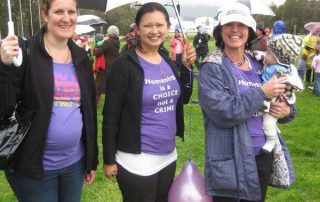
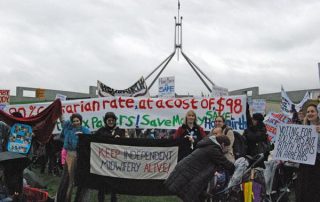




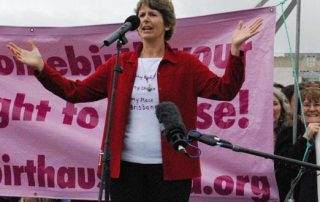



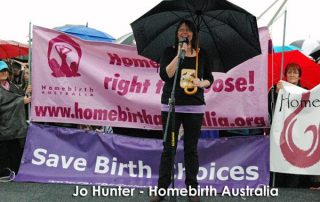

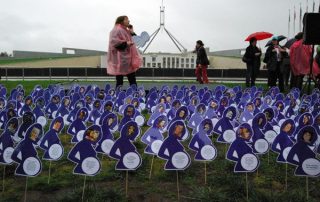

Recent Comments